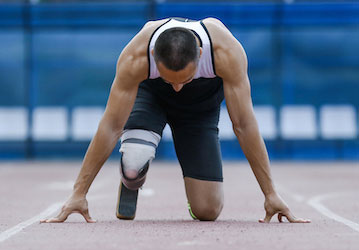The brain can “feel” pain even after an arm and/or leg amputation, but a new treatment using mirrors can provide some relief. This common phenomenon, known as phantom limb pain (PLP), occurs in at least 75% of Operation Enduring Freedom (OEF)/Operation Iraqi Freedom (OIF) veteran amputees. Although its causes aren’t fully understood, one theory is that there’s a mismatch between what your brain sees and what it feels.
Mirror therapy offers a promising treatment for those suffering from PLP. A long mirror is placed between the patient’s legs and set to face the intact limb. As the patient moves and watches the intact limb in the mirror’s reflection, the brain is “tricked” into seeing the missing limb. The brain “sees” the phantom limb moving in the mirror and quiets busy activity or bad memories. The mirror positively stimulates the brain, causing reorganization or rewiring; this helps relieve PLP.
Healthcare providers have successfully used mirror therapy to help single-limb amputees. They’ve also adjusted the approach for double-limb amputees. Using an adapted method, a physical therapist (PT) acts as the mirror. The PT sits beside the patient and then mimics or “mirrors” the amputee’s phantom limbs with his/her intact limbs. For example, if a patient complains of calf cramps, the PT can stretch his/her own calves while the patient observes and feels relief in their phantom limbs. They’re currently working on using virtual reality to take the approach a step further.

